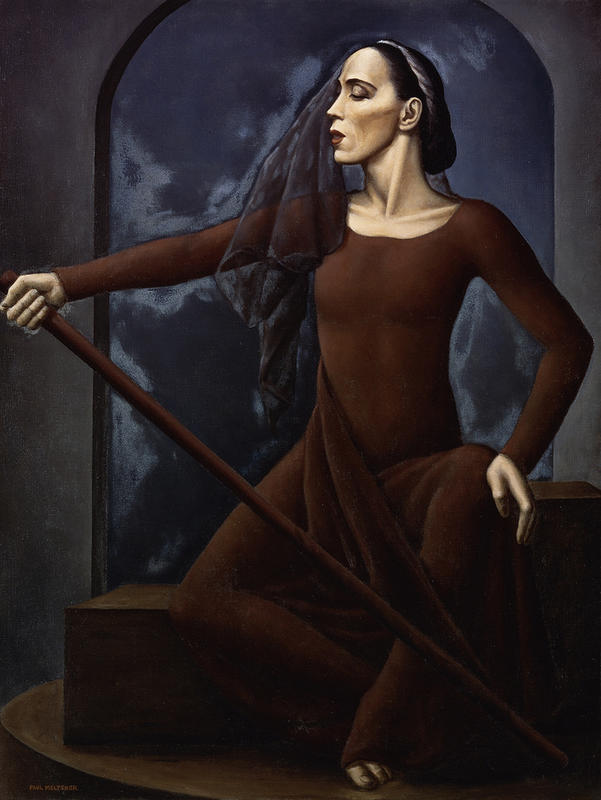More about Martha Graham
- All
- Info
- Shop

Contributor
Pictured here is Martha Graham, a woman who didn’t have any children but was still the mother of American dance.
Born on May 11, 1894, Martha was the daughter of George Graham, a doctor who treated his patients’ nervous disorders through physical movement. Hint: this was at least a minor influence on the course of her life. She knew nothing of the world of dance until her family moved to California when she was a teenager. The family went to see Ruth St. Denis perform at the Mason Opera House in Los Angeles, and Martha’s life was changed forever. She wanted to dance more than anything but being from a strongly Presbyterian family, she was not allowed to. Dancing is the devil’s work. But she still managed to study dance, eventually joining Denishawn School of Dancing and Related Arts, where she was a student and teacher for over eight years.
After this, Graham set out on her own, founding the Martha Graham School for Contemporary Dance and upturning all of the canons of dance of the time. “Miss Graham recalled in later years that as a young dancer about to embark upon an independent career in 1922, she had chanced upon a nonfigurative painting by Wassily Kandinsky -- a slash of red against a field of blue. ‘I will dance like that,’ she said.” Even if you’ve seen a Kandinsky painting this statement doesn’t make much sense… until you see the Graham technique, which is made up of “fierce pelvic contractions” and “rugged floor work." Then it makes perfect sense.
Her style and teachings became “the cornerstone of postwar modern dance” and her company lives on today as one of the most influential in the dance scene. The Graham technique was more than just a dance, however. It “spoke eloquently against the crushing of the human spirit, and one of her frequent themes was the condemnation of intolerance, especially toward nonconformists.” This wasn’t just all talk either. When Graham was invited by Hitler to perform at the International Arts Festival in Berlin in 1936, she declined like a badass.
In many ways, Graham’s work has been related to the visual arts. She was a longtime collaborator with Isamu Noguchi. For over three decades, Martha Graham danced her most compelling choreography on and around the abstract sculpture of Isamu Noguchi.” She wanted to dance like Kandinsky painted and as a result has been called the “Picasso of Dance.” She somehow made a visual art out of the the movements of her body, which is why she was a genius.
Sources
- Kisselgoff, Anna. "Martha Graham Dies At 96; A Revolutionary In Dance." Archive.nytimes.com. N.p., 1991. Web. 23 July 2018.
- "Martha Graham." Biography. N.p., 2015. Web. 23 July 2018.
- "Martha Graham | National Portrait Gallery." Npg.si.edu. N.p., 2018. Web. 23 July 2018.
- Meier, Allison. "A Tactile Tour Of Isamu Noguchi And Martha Graham's 1940S Dance Sets." Hyperallergic. N.p., 2016. Web. 23 July 2018.
- Teachout, Terry. "TIME 100: Martha Graham." Web.archive.org. Web. 23 July 2018.












